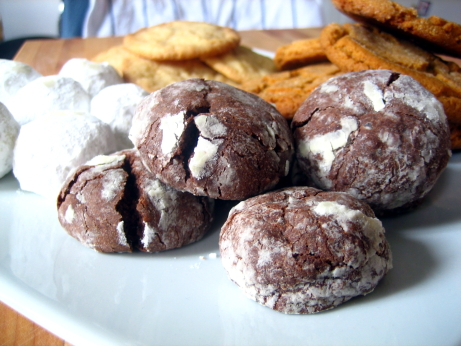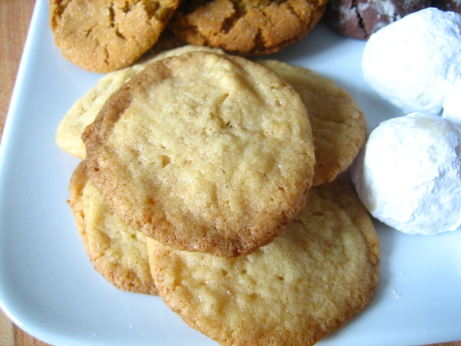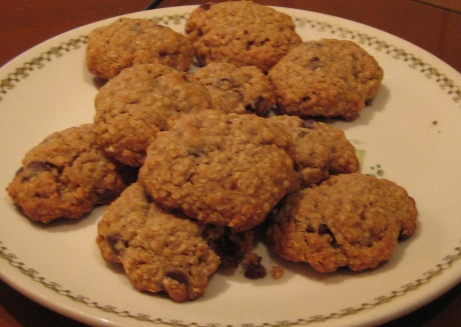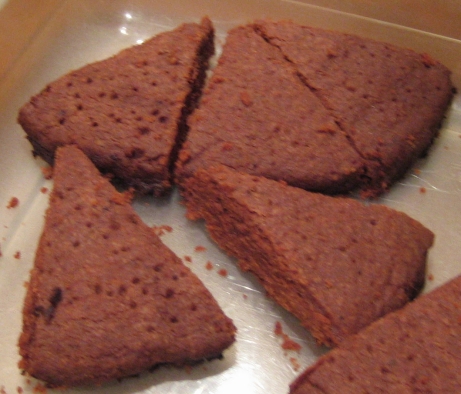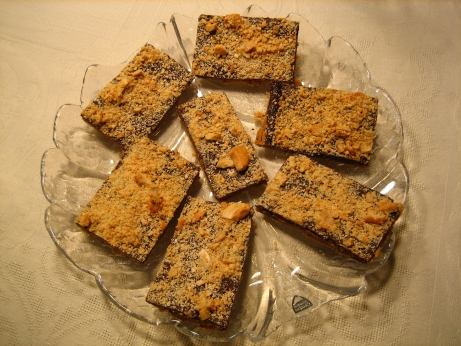This is a polarizing recipe. If the thought of anise and chocolate together piques your interest, you’ll probably like these cookies. If however that sounds like the worst idea you’ve heard all day, you probably won’t. That may sound trite or obvious, but anise is like that. I don’t know anyone who is neutral on the subject of black licorice. People love it, hate it, or have a complex ambivalence towards it. If a recipe is anise scented, you know right off the bat that that’s going to be a dominant element of the recipe’s flavour.
I’m all for anise, I especially like it in savory cooking, I have a little trouble with those super salty licorice candies the Dutch love, but otherwise anise and I are good. When I first flipped through the cookies section of The Book these ones caught my eye, and I’ve been looking forward to making them ever since. I haven’t done them until now because they needed to be served in the right context. My dining companion and I aren’t huge on desserts, so I usually try to serve them when we have friends over, or to bring them places. It’s hard to bring chocolate-anise cookies to a party or dinner, because you know going in that lots of people are going to hate them. I had to wait until I was making batches and batches of cookies, so that they could be one among many elements of a cookie tray.
The cookie recipe is fairly standard. You sift together the flour, baking powder, and salt, melt bittersweet chocolate and butter in a double boiler, and whisk together eggs, walnuts, Sambuca, and sugar. You then add the chocolate and flour mixtures to the egg mixture and combine. You pop the batter in the fridge for two hours, then roll heaping tablespoons of dough into balls, and toss them in confectioner’s sugar before baking.
The sugar causes the tops to crack, and I was hoping it was going to give the uncracked parts a nice glaze. As you can see a lot of the sugar stayed in white clumps, which I didn’t find too attractive. The insides of the cookies were soft and cakey, studded with walnuts. As predicted chocolate, and anise were the dominant flavours. I used Pernod instead of Sambuca for this recipe (a Book approved substitution), but I should have remembered that Sambuca is much sweeter than Pernod and compensated.
For people who are into anise cookies, these were quite good. They weren’t the most beautiful cookies I’ve ever produced, but the texture was very nice, and the rich chocolate and anise combination was a winner for me. I try to take other people’s opinions into account when rating these recipes, I usually estimate other’s average ratings, and split the difference between their liking and mine. But we have a bimodal distribution here, and the mean is no longer a meaningful statistic, the mode or the median aren’t much help either. Since this is the food blog part of my life, and not the behavioral neurobiology part, I get to violate good statistical practice, and just ignore all those anise haters.
